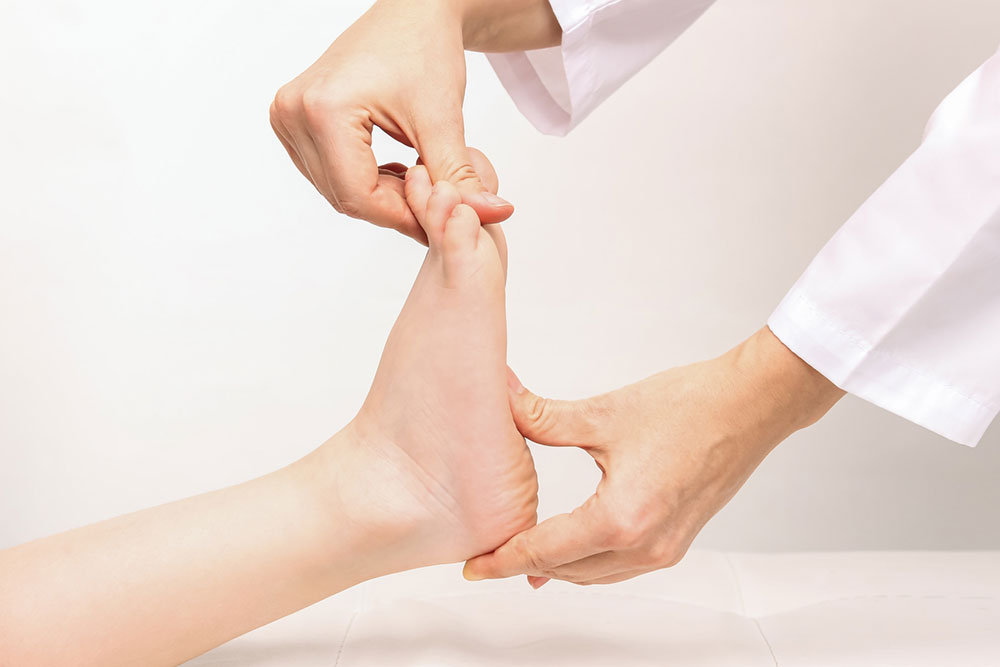Comprehensive Guide to Diagnosing Spinal Canal Narrowing and Its Treatment Options
Spinal canal narrowing, or spinal stenosis, is a common degenerative condition affecting the spine. This comprehensive guide covers the types, symptoms, causes, diagnostic procedures, and treatment options for spinal stenosis. Early diagnosis and appropriate management are critical to preventing severe neurological deficits. Learn about the advanced imaging techniques used for diagnosis and explore both conservative and surgical treatment options. Recognize the importance of seeking prompt medical advice if you experience symptoms like leg pain, numbness, or difficulty walking. Understanding spinal stenosis can help you make informed decisions about your spinal health and treatment choices.

Understanding and Diagnosing Spinal Canal Narrowing
Spinal stenosis, commonly known as narrowing of the spinal canal, is a prevalent condition that can significantly impact an individual’s quality of life. It involves the constriction of space within the spine, putting pressure on the spinal cord and nerves. This condition can lead to various symptoms, from mild discomfort to severe neurological deficits. Accurate diagnosis and timely intervention are essential for managing the condition effectively. In this comprehensive guide, we will explore the different types of spinal stenosis, their signs and symptoms, underlying causes, diagnostic procedures, and available treatment options.
Spinal stenosis can be classified based on its location within the spine:
Cervical spinal stenosis: Affects the neck region, potentially leading to neck pain and neurological symptoms in the arms and hands.
Lumbar spinal stenosis: Occurs in the lower back, often causing pain, numbness, or weakness in the legs.
Thoracic spinal stenosis: Involves the mid-back area, which is less common but can cause pain and neurological issues.
Congenital spinal stenosis: A condition present at birth, where the spinal canal is narrower than normal.
Recognizing the Signs and Symptoms of Spinal Stenosis
The symptoms of spinal stenosis can vary widely depending on the severity and location of the narrowing. Common indicators include:
Sciatica: Characterized by shooting or burning pain radiating down the legs, often worsened by activities like walking or standing.
Foot drop: Weakness or inability to lift the front part of the foot, leading to difficulty walking.
Balance and gait issues: Unsteadiness, difficulty maintaining balance, or a tendency to stumble.
Sensory disturbances: Numbness, tingling sensations, or radiating pain in the extremities.
Bladder and bowel dysfunction: In advanced cases, nerve compression can cause incontinence or difficulty controlling bladder and bowel movements.
Understanding the Causes Behind Spinal Stenosis
Most cases of spinal stenosis are associated with degenerative changes typical of aging or chronic wear and tear. Common causes include:
Degenerative disc disease: Disc degeneration leads to loss of cushioning and height, narrowing the spinal canal.
Osteoarthritis: Breakdown of cartilage causes bone spurs and joint swelling, contributing to stenosis.
Ligament thickening: The ligamentum flavum can thicken and encroach on the spinal canal.
Herniated discs: Displaced disc material can compress nerves and the spinal cord.
Bone spurs: Abnormal bony growths that develop as a reaction to joint degeneration.
Trauma and fractures: Spinal injuries can cause structural deformities that lead to narrowing.
Tumors and abnormal growths: These can press on the spinal cord or nerves, causing stenosis.
Paget’s disease: A condition involving abnormal bone remodeling that affects spinal integrity and nerve function.
Advanced Stages and Complications
In the advanced stages of spinal stenosis, the pressure on nerves and the spinal cord increases, often leading to significant neurological deficits. Ligaments may thicken, and osteophytes (bone spurs) may protrude, further compressing neural pathways. Serious complications can include cauda equina syndrome, a medical emergency characterized by severe nerve compression that causes loss of bladder and bowel control, severe leg weakness, and sensory loss.
Diagnosis: How Do Doctors Detect Spinal Canal Narrowing?
Accurate diagnosis hinges on a combination of thorough clinical examination and advanced imaging techniques. Healthcare professionals employ several diagnostic tools to confirm the presence and extent of spinal stenosis:
X-ray Imaging: Provides a detailed view of bone structures, highlighting bone spurs, degenerative changes, and alignment anomalies.
Magnetic Resonance Imaging (MRI): The gold standard for diagnosing spinal stenosis, MRI offers detailed images of soft tissues like discs, ligaments, nerves, and the spinal cord. It can reveal nerve compression, disc herniation, and other abnormalities with high precision.
Computed Tomography (CT) Scan and Myelogram: CT scans create cross-sectional images of the spine, often combined with a myelogram—an injection of contrast dye—to visualize the spinal cord and nerve roots more clearly. This approach is especially useful when MRI cannot be performed.
Electrodiagnostic Tests: Electromyography (EMG) and nerve conduction studies assess nerve function and help localize neurological impairment caused by stenosis.
Can Spinal Stenosis Be Cured? Exploring Treatment Options
While there is currently no definitive cure for spinal stenosis, a variety of treatments aim to manage symptoms and improve quality of life. The strategy depends on the severity of the condition, symptom progression, and patient health status.
Medications are often the first line of treatment, including:
Anti-inflammatory drugs (NSAIDs): To reduce inflammation and alleviate pain.
Analgesics: Pain relievers for managing discomfort.
Muscle relaxants: To alleviate muscle spasms.
Neurotrophic agents: To support nerve health.
Physical therapy plays a vital role in strengthening muscles, improving flexibility, and reducing pressure on the spine. Also, epidural steroid injections can provide targeted relief of inflammation and pain.
Surgical Interventions and Advanced Treatments
In cases where conservative measures fail, or symptoms are severe, surgical procedures might be necessary. Common surgical options include:
Laminectomy: Removal of the lamina (part of the vertebra) to decompress the spinal canal.
Foraminotomy: Enlarging the foramina (small openings) where nerve roots exit the spine.
Spinal Fusion: Fusing affected vertebrae to stabilize the spine after decompression.
Minimally Invasive Surgery: Techniques that reduce tissue damage and promote faster recovery, such as microdiscectomy and endoscopic procedures.
Leading Centers for Spinal Stenosis Treatment in the US
Patients seeking specialized care can consider renowned hospitals and medical centers known for spine treatments:
Arkansas Surgical Hospital
Aultman Hospital
Forsyth Medical Center
Fort Walton Beach Medical Center
Forrest General Hospital
Emory University Orthopaedics & Spine Hospital
Einstein Medical Center
Duke University Hospital
Doctors Hospital of Sarasota
Early diagnosis and intervention remain crucial for managing spinal stenosis, minimizing nerve damage, and maintaining functional mobility. If you experience persistent back or neck pain, consult with a healthcare professional promptly.





